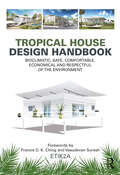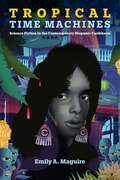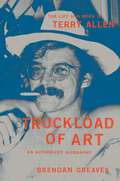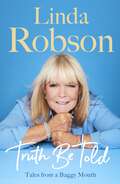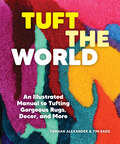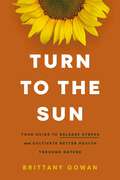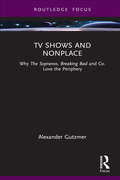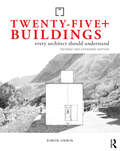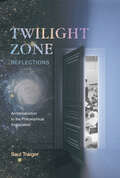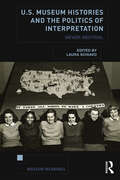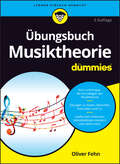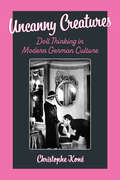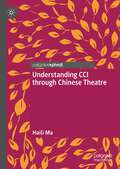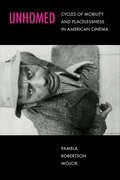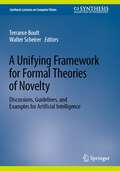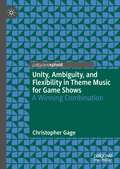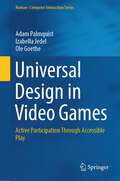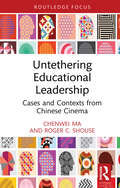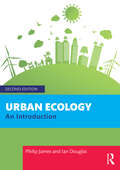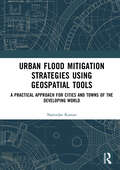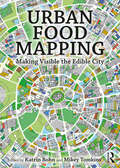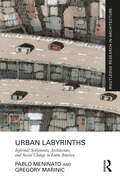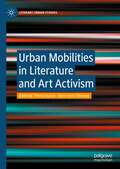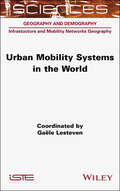- Table View
- List View
Tropical House Design Handbook: Bioclimatic, Safe, Comfortable, Economical and Respectful of the Environment
by Etik2aPacked with accessible information, this book covers all the technical and practical aspects of home design in tropical environments. . It begins by outlining the prerequisites needed to understand the issues involved (climate, heat, thermal comfort, etc.) and discusses the solutions offered by traditional housing. It then identifies current solutions for protecting buildings and their occupants from solar radiation and external heat, while promoting bioclimatic and environmentally friendly approaches. . The economic viability of the solutions identified is discussed, as are the advantages and disadvantages of the materials, depending on the context and standards in force. . Numerous examples illustrate how buildings can be adapted to local realities, from the avant-garde creations of Jean Prouvé to those of today’s architects who are committed to sustainable development, as well as specific projects incorporating the recommendations made in this book. More than 460 photos, drawings, diagrams, tables, maps, house plans, logos and pictograms illustrate this reference work for all those involved in construction in tropical regions, particularly students in the field and, more generally, anyone – from professionals to private individuals – looking for useful information on this subject.
Tropical Time Machines: Science Fiction in the Contemporary Hispanic Caribbean (Reframing Media, Technology, and Culture in Latin/o America)
by Emily A. MaguireHow writers and artists use science fiction to speak to the current moment in the Caribbean Exploring the remarkable recent increase in works of science fiction originating in Spanish-speaking parts of the Caribbean and their diasporas, Tropical Time Machines shows how writers, filmmakers, musicians, and artists are using the language of the genre to comment on the region’s history and present-day realities. Discussing how previous Caribbean literature and film has characterized places including Cuba, Puerto Rico, and the Dominican Republic as “out of sync” with Western time, occupying a repeating or static space, Emily Maguire argues that science fiction breaks these cycles and resituates the region temporally and spatially. In chapters on cyberpunk, zombies, post-apocalyptic narratives, and the ab-real, Maguire shows how recent cultural production analyzes and critiques the ways globalization and national leadership have reinforced the region’s marginalization amid economic and climate crises. Art that employs the science fictional mode makes room for a new vision of the Caribbean, Maguire demonstrates—an alternate perspective in which the region has agency in shaping its own narratives and trajectories. The texts themselves are time machines, enabling creators to protest inequalities of the present from the point of view of an imagined, transformed future. A volume in the series Reframing Media, Technology, and Culture in Latin/o America, edited by Héctor Fernández L’Hoeste and Juan Carlos Rodríguez Publication of this work made possible by a Sustaining the Humanities through the American Rescue Plan grant from the National Endowment for the Humanities.
Truckload of Art: The Life and Work of Terry Allen—An Authorized Biography
by Brendan GreavesThe definitive, authorized, and first-ever biography of Terry Allen, the internationally acclaimed visual artist and iconoclastic songwriter who occupies an utterly unique position straddling the disparate, and usually distant, worlds of conceptual art and country music. &“People tell me it&’s country music,&” Terry Allen has joked, &“and I ask, &‘Which country?&’&” For nearly sixty years, Allen&’s inimitable art has explored the borderlands of memory, crossing boundaries between disciplines and audiences by conjuring indelible stories out of the howling West Texas wind. In Truckload of Art, author Brendan Greaves exhaustively traces the influences that shaped Allen&’s extraordinary life, from his childhood in Lubbock, Texas, spent ringside and sidestage at the wrestling matches and concerts his father promoted, to his formative art-school years in incendiary 1960s Los Angeles, and through subsequent decades doggedly pursuing his uncompromising artistic vision. With humor and critical acumen, Greaves deftly recounts how Allen built a career and cult following with pioneering independent records like Lubbock (on everything) (1979)—widely considered an archetype of alternative country—and multiyear, multimedia bodies of richly narrative, interconnected art and theatrical works, including JUAREZ (ongoing since 1968), hailed as among the most significant statements in the history of American vernacular music and conceptual art. Drawing on hundreds of revealing interviews with Allen himself, his family members, and his many notable friends, colleagues, and collaborators—from musicians like David Byrne and Kurt Vile to artists such as Bruce Nauman and Kiki Smith—and informed by unprecedented access to the artist&’s home, studio, journals, and archives, Greaves offers a poetic, deeply personal portrait of arguably the most singularly multivalent storyteller of the American West.
Truth Be Told: Tales from a Baggy Mouth
by Linda RobsonTHE SUNDAY TIMES BESTSELLING HILARIOUS AND HEARTFELT MEMOIR FROM LINDA ROBSON__________Linda Robson’s nickname is Baggy Mouth for good reason.She may be one of the nation’s favourite TV personalities – whether playing Tracey Stubbs in Birds of a Feather or being a regular on Loose Women – but she can’t help hilariously oversharing. Luckily, this is an ideal trait for her first-ever memoir . . .Taking us back to the very beginning, growing up in a North London council house, Linda explains how she came to attend theatre school aged nine, where she met Pauline Quirke.As their friendship blossomed and evolved into a professional partnership, small parts in theatre and film productions culminated in the pair being cast in the enduring and beloved sitcom Birds of a Feather.With a wicked glint in her eye, Linda recounts the twists and turns of an actor’s life, sharing tales of backstage antics, on-set stories and demanding co-stars from across her her varied and celebrated career.However, it has not all been laughter, and she candidly talks about the struggles she’s faced in her personal life and the battles she has had to overcome. Yet her determination to pull herself back from the brink shows us that the tough times really do make us stronger.Truth Be Told is funny, warm and loose-lipped about a remarkable life well-lived.__________PRAISE FOR TRUTH BE TOLD'Searingly honest' The Mail
Tuft the World: An Illustrated Manual to Tufting Gorgeous Rugs, Decor, and More
by Tiernan Alexander Tim EadsA visual how-to guide on the craft of tufting rugs, home decor, and more from the duo behind Tuft the World, the tufting company that has helped launch and educate a new generation of tufters.Tuft the World is an easy-to-follow and beautifully illustrated guide to tufting, whether you’re creating your first project or are a seasoned tufter. Brought to you by the preeminent experts in the machine-tufting field, this detailed crafting guide shows you, through step-by-step instructions and 175 full-color photographs, how to create contemporary, stylish, and enjoyable machine-tufted rugs, clothes, and objects. Within these pages, you'll learn about:Tufting machines, materials, and techniquesWorkspace setupHow to create projects from start to finish, including everything from a bathmat, bedside rug, shawl collar, or chair slipcover to a picture frame, sculptural work of art, or stunning tufted cat tree!Contemporary rug artists and their designsThe history of tufting and some of the women and men whose inventions brought the craft to lifeAnd moreUnlike online videos about tufting, this book is a long-lasting reference showcasing the versatility and creativity of the craft by the experts—a highly accessible, thorough, and enriching guide. Included throughout are sidebars on the historical context for amateur and professional rug-making in America and spotlights on current tufting makers.This much-needed companion introduces and expands knowledge for the many new and experienced tufters interested in the booming craft of machine-tufted rugs and decor. Inspiring and simple to follow, this book is sure to make a tufter out of anyone.
Turn to the Sun: Your Guide to Release Stress and Cultivate Better Health Through Nature
by Brittany GowanTurn to the Sun guides you down a nourishing path of uplifting affirmations, soul-refreshing meditations, and lush botanical photography that helps you heal in the company of nature. Approach your days with less anxiety, renewed vigor, and a deeper sense of well-being as you become grounded and soak up nature's restorative qualities.Whether you live in an urban jungle, on a suburban cul-de-sac, or at the edge of a national forest, you might find yourself more connected to technology than to nature. In the midst of the pings and rings of a device-dependent life, is getting close to nature even possible—or worth it?Wellness coach and the founder of Pause with Plants Brittany Gowan shows you how slowing down, unplugging, and connecting with the natural world is not only possible and absolutely worth it, but also essential. Brittany creates a reflective experience enhanced by plants that helps you find the calm and tranquility you crave.In these gorgeous, photo-filled pages, you'll find ways to:Cultivate mindfulness as you let go of daily distractionsLet nature guide you into relishing the present momentUse a nature-focused mindset to persist through challengesConnect and ground yourself with nature anywhere, anytimeNourish your relationship with yourself and the world around you Turn to the Sun includes:Affirmations: simple statements that have a positive effect on your thoughts and actionsMeditations: guidance for reflection and contemplation to center your mind and bodyHow-tos: doable exercises to fully engage with the natural worldStunning botanical photography: lush images of plants that pair with affirmations, meditations, and how-tos When in your life have you felt most alive? You can feel that way again. You can flourish, with purpose, whether you are in a waiting season or ready to blossom. It's time to pause. It's time to breathe. It's time to grow.
TV Shows and Nonplace: Why The Sopranos, Breaking Bad and Co. Love the Periphery (Routledge Focus on Television Studies)
by Alexander GutzmerThis book scrutinizes the relationship between contemporary TV shows and space, focusing on the ways in which these shows use and narrate specific spatial structures, namely, spaces far away from traditional metropolises. Beginning with the observation that many shows are set in specific spatial settings, referred to in the book as “nonplace territories” – e.g., North Jersey, New Mexico, or rural and suburban Western Germany – the author argues that the link between such nonplace territories and shows such as The Sopranos, Breaking Bad, or Dark is so intense because the narrative structure functions similarly to these territories: flat, decentralized, without any sense of structure or stable hierarchy. The book takes three different perspectives: first, it looks at the rationale for combining TV shows and nonplace territories from the viewpoint of narrative strategy. It then thinks through what these strategies mean for practicing architects. Finally, it approaches the arguments made before from a “user” perspective: what does this narrative mirroring of social-spatial reality in places such as Albuquerque or Jersey City mean for people living in these places? This new approach to architecture and space on screen will interest scholars and students of television studies, screen architecture, media and architectural theory, and popular culture.
Twenty-Five+ Buildings Every Architect Should Understand: Revised and Extended Edition
by Simon UnwinThe underlying theme of Twenty-Five+ Buildings Every Architect Should Understand is the relationship of architecture to the human being, how it frames our lives and orchestrates our experience; how it can help us make sense of the world and contribute to our sense of identity and place. Exploring these dimensions through a wide range of case studies that illustrate the rich diversity of twentieth- and twenty-first-century architecture, this book is essential reading for every architect. With the addition of numerous shorter analyses, this new edition covers an even greater range of architectural ideas, providing students and architects with further inspiration for exploration in their own design work. Architects live by ideas. But where do they come from? And how do they shape buildings? There is no one right way to do architecture. This book illustrates many. Its aim is to explore the rich diversity of architectural creativity by analysing a wide range of examples to extract the ideas behind them. Twenty-Five+ Buildings Every Architect Should Understand is a companion to Simon Unwin’s Analysing Architecture: the Universal Language of Place- Making (most recent edition, 2021), and part of the trilogy which also includes his Exercises in Architecture: Learning to Think as an Architect (second edition, 2022). Together the three books offer an introduction to the workings of architecture providing for the three aspects of learning: theory, examples and practice. Twenty-Five+ Buildings focusses on analysing examples using the methodology offered by Analysing Architecture, which operates primarily through the medium of drawing. An underlying theme of Twenty-Five+ Buildings Every Architect Should Understand is the relationship of architecture to the human being, how it frames our lives and orchestrates our experiences; how it can help us give form to the world and contributes to our senses of identity and place. Exploring these dimensions through case studies that illustrate the rich diversity of twentieth- and twenty-first-century architecture, this book is essential reading, and hopefully an inspiration, for every architect. In this new edition supplementary analysis and discussion has been added to each of the twenty-five case studies, drawing attention to their influences from and on other architects. A number of extra shorter analyses have been included too, following the practice of presenting extra small dishes interspersed among main courses in high-end restaurants. These additional short analyses account for the + sign after ‘Twenty-Five’ in the title of this edition, and double the number of buildings analysed to around fifty.
Twilight Zone Reflections: An Introduction to the Philosophical Imagination
by Saul TraigerTwilight Zone Reflections is the first book of its kind to explore the entirety of The Twilight Zone (1959–1964) as a series. It acts as both an introduction to the field of philosophy and as a complete guide to the philosophical issues illustrated throughout the original 1959-64 television series. Author Saul Traiger explores each of the 156 episodes, investigating the show’s themes in metaphysics, epistemology, moral and political philosophy, and other topics in a way that is accessible to both seasoned philosophers and those outside academia. Each short chapter dives into a single episode and concludes with helpful cross-references to other episodes that explore similar philosophical problems and subjects. For example, a reader may be interested in questions about the nature of the mind and whether machines can think. By referencing this book, they could easily discover the thematic connections between episodes like “I Sing the Body Electric” or “The Lateness of the Hour,” and learn how both episodes introduce the viewer to possible worlds that challenge us to consider whether our idea of the mind, and even our very personhood, extends beyond the human to robots and other artificial intelligences. Each chapter introduces fundamental philosophical questions such as these through the lens of The Twilight Zone and inspires additional exploration. Further readings are suggested for all episodes, making this volume indispensable to academics, students, and fans of the show. Each chapter is short and accessible, ensuring that this book is the perfect resource to accompany a complete series re-watch. The Twilight Zone considered questions that strike at the heart of philosophical inquiry, such as the nature of self, the existence of god, the possibility of an afterlife, the relationship between knowledge and mental illness, the nature of possibility, even the nature of imagination itself, and so much more. Traiger argues that each episode can serve as an entry point for philosophical reflection. Twilight Zone Reflections is a valuable reference for anyone interested in exploring a well-known slice of popular culture history that doubles as a vast store of philosophical ideas.
U.S. Museum Histories and the Politics of Interpretation: Never Neutral (Museum Meanings)
by Laura SchiavoU.S. Museum Histories and the Politics of Interpretation is the first collection to examine the history of museums in the United States through the lens of the political and ideological underpinnings at the heart of exhibitions, collecting, and programming. Including contributions from historians, art historians, anthropologists, academics, and museum professionals, the book argues that museums have always been embedded in the politics and culture of their time – whether that means a reification of hegemonic notions of race, gender, and progress or a challenge to those normative structures. Contributions probe the political nature of collection and interpretation as concept and practice, and museum work as both reflective of and contributing to the politics and circulation of power in different historical moments. As a whole, the volume provides detailed readings of museums that demonstrate the ways in which these trusted cultural institutions have intervened in shifting concepts of nation, community, indigeneity, race, citizenship, inclusion, identity, localism, and memory. U.S. Museum Histories and the Politics of Interpretation makes arguments about the historically and politically rooted nature of cultural production in museums that apply to institutions across the globe. It is essential reading for students and scholars of museum studies, public history, cultural history, art history, and memory.
U.S. Museum Histories and the Politics of Interpretation: Never Neutral (Museum Meanings)
by Laura SchiavoU.S. Museum Histories and the Politics of Interpretation is the first collection to examine the history of museums in the United States through the lens of the political and ideological underpinnings at the heart of exhibitions, collecting, and programming.Including contributions from historians, art historians, anthropologists, academics, and museum professionals, the book argues that museums have always been embedded in the politics and culture of their time – whether that means a reification of hegemonic notions of race, gender, and progress or a challenge to those normative structures. Contributions probe the political nature of collection and interpretation as concept and practice, and museum work as both reflective of and contributing to the politics and circulation of power in different historical moments. As a whole, the volume provides detailed readings of museums that demonstrate the ways in which these trusted cultural institutions have intervened in shifting concepts of nation, community, indigeneity, race, citizenship, inclusion, identity, localism, and memory.U.S. Museum Histories and the Politics of Interpretation makes arguments about the historically and politically rooted nature of cultural production in museums that apply to institutions across the globe. It is essential reading for students and scholars of museum studies, public history, cultural history, art history, and memory.
Übungsbuch Musiktheorie für Dummies (Für Dummies)
by Oliver FehnWenn der Stoff sitzen soll, muss man die Theorie auch mal praktisch angehen. Denn auch bei der Musiktheorie hilft vor allem Üben, Üben, Üben. Dieses Buch enthält abwechslungsreiche Übungen, kurzweilige Multiple-Choice-Tests, hilfreiche Eselsbrücken und viele Tipps und Tricks, die Ihnen helfen, Ihr musiktheoretisches Wissen zur Perfektion zu bringen. Sie finden kompakte Erklärungen der wichtigsten musiktheoretischen Grundlagen und natürlich ausführliche Lösungen zu den zahlreichen Übungen. Viele der Übungen und Lösungen gibt es außerdem zum Anhören als Download. Sie erfahren Wie Sie Ihr musiktheoretisches Wissen durch Übungen zu Noten, Akkorden, Intervallen, Tonleitern, Tonarten und Co. vertiefen Wie Sie Musik notieren und spielen Wie Sie Ihr Lieblingsstück in eine andere Tonart transponieren
Uncanny Creatures: Doll Thinking in Modern German Culture (Social History, Popular Culture, And Politics In Germany)
by Christophe KonéGermany held a monopoly on the manufacture and export of bisque toy dolls in Europe before WWI. Yet, dolls’ omnipresence in the material, visual, and literary culture of the modern German-speaking world has so far not been properly addressed. In demonstrating this cultural affinity for dolls, Christophe Koné draws upon a range of stories and seminal essays on dolls, as well as toys, sculptures, paintings, and photographs. He examines how E.T.A. Hoffmann’s romantic tale The Sandman (1815) has been a major source of inspiration for German-speaking doll makers because of how it centers imagination and inventiveness. Using Hoffmann’s tale as an early example of an amalgam between doll thinking and making in German culture, Koné shows how it initiated a genealogy of doll thinkers (Freud & Jentsch), writers (Rilke), painters (Kokoschka), photographers (Bellmer), and makers (Pritzel). Uncanny Creatures then explores how this unusual interest in human-like figures continues a long tradition of thought devoted to conceptualizing “things,” from Immanuel Kant’s theory of the thing-in-itself to Martin Heidegger’s lecture on the thing, and Eduard Mörike or Rainer Maria Rilke’s thing-poems. Because dolls occupy a liminal space—not quite things and more than mere objects—they appear as uncanny creatures which have held a fascination for writers, thinkers, and artists alike. Uncanny Creatures moves past the Freudian discourse of fetishism to propose a new reading of doll artifacts in German culture centered on their ability to evoke a feeling of uncertainty and unsettlement in the viewer.
Understanding CCI through Chinese Theatre
by Haili MaThis book examines the development of Cultural and Creative Industries (CCI) in China through the angle of Chinese Theatre, xiqu. It focuses on the political and socio-economic transition period at the turn of the 21st century, as China evolves from ‘Made in China’ to ‘Created in China’, highlighting associated class reconstruction and cultural production and consumption. There are many forms of Chinese Theatre, the most popular one throughout Chinese history to date is the sing-song drama, collectively refers to as xiqu, which currently has over 300 regional styles across China. In 2014, President Xi Jinping’s Beijing Talk on Arts and Literature, which serves as China’s latest Chinese Communist Party (CCP) ideological direction and cultural policy, stressed that ‘the future of Chinese cultural and creative industries is to be anchored on traditional art forms, such as xiqu’. Such Chinese cultural and creative industry distinction will be addressed in this book.
Unhomed: Cycles of Mobility and Placelessness in American Cinema
by Pamela Robertson WojcikIn this rich cultural history, Pamela Roberston Wojcik examines America's ambivalent and shifting attitude toward homelessness. She considers film cycles from five distinct historical moments that show characters who are unhomed and placeless, mobile rather than fixed—characters who fail, resist, or opt out of the mandate for a home of one's own. From the tramp films of the silent era to the 2021 Oscar-winning Nomadland, Wojcik reveals a tension in the American imaginary between viewing homelessness as deviant and threatening or emblematic of freedom and independence. Blending social history with insights drawn from a complex array of films, both canonical and fringe, Wojcik effectively "unhomes" dominant narratives that cast aspirations for success and social mobility as the focus of American cinema, reminding us that genres of precarity have been central to American cinema (and the American story) all along.
A Unifying Framework for Formal Theories of Novelty: Discussions, Guidelines, and Examples for Artificial Intelligence (Synthesis Lectures on Computer Vision)
by Terrance Boult Walter ScheirerThis book presents the first unified formalization for defining novelty across the span of machine learning, symbolic-reasoning, and control and planning-based systems. Dealing with novelty, things not previously seen by a system, is a critical issue for building vision-systems and general intelligent systems. The book presents examples of using this framework to define and evaluate in multiple domains including image recognition image-based open world learning, hand-writing and author analysis, CartPole Control, Image Captioning, and Monopoly. Chapters are written by well-known contributors to this new and emerging field. In addition, examples are provided from multiple areas, such as machine-learning based control problems, symbolic reasoning, and multi-player games.
Unity, Ambiguity, and Flexibility in Theme Music for Game Shows: A Winning Combination
by Christopher GageWith flashing lights, bright colors, and big money, game shows have been an integral part of American culture since the days of radio. While the music that accompanies game shows is charming and catchy, it presents two unique, opposing challenges: first, it must exhibit unity in its construction so that, at any point and for any length of time, it is a tuneful, recognizable signifier of the show to which it belongs; at the same time, it must also possess the ability to be started and stopped according to the needs of gameplay without seeming truncated. This book argues that game show music, in particular from 1960 to 1990, deploys a variety of shared techniques in order to manage these two goals, including theme-derived vamps; saturation of motivic material; and harmonic, rhythmic, and formal ambiguity. Together, these techniques make game show themes exciting, memorable, and perfectly suited to their role.
Universal Design in Video Games: Active Participation Through Accessible Play (Human–Computer Interaction Series)
by Adam Palmquist Izabella Jedel Ole GoetheAs participation in game related activities increases around the world and across a larger part of the population, it is obvious that games are not just an entertainment medium for children or young people. Games can be used to accomplish different purposes for different groups of people in society. Developing a universal designed game involves more than adding a cast of diverse characters. Games with universal design, at their core, are experiences that are designed from the ground up to be accessible to everyone – through mechanics, options, and user experience. This book explains the meaning and need for universal design in video games and sheds light on important disciplines. Researchers define a universal designed game as a video game that actively welcomes all players. When players connect authentically with a video game, they’re much more likely to engage with the content. Conversely, when players can’t physically play a game, or don’t see characters that look like them, they feel isolated and miss out on beneficial opportunities to learn and collaborate. Universal design maximizes the impact of playing games, for instance, by ensuring that they’re accessible, empowering and representative for every participant.
Untethering Educational Leadership: Cases and Contexts from Chinese Cinema
by Chenwei Ma Roger C. ShouseLingdao, the Chinese word for leadership, is rarely used to denote acts of social persuasion that occur outside of contexts of formal rank or status. However, the ubiquity of informal leadership in China raises a number of practical and theoretical questions. Based on an analysis of selected Chinese cinematic works depicting settings of educational practice and policy, the book explores how "Western" understandings of leadership emerge from these texts to form discursive media for social change. It also offers a new understanding of lingdao and leadership; how they represent a natural human desire, regardless of formal rank or position, to mobilize collective will, change minds, and achieve social change. The book will be of interest to professional scholars and graduate students of Chinese culture, educational leadership, mass media, and popular culture.
Urban Ecology: An Introduction
by Philip James Ian DouglasThis fully revised second edition reflects the great expansion in urban ecology research, action, and teaching since 2015. Urban ecology provides an understanding of urban ecosystems and uses nature-based techniques to enhance habitats and alleviate poor environmental conditions. Already the home to the majority of the world’s people, urban areas continue to grow, causing ecological changes throughout the world. To help students of all professions caring for urban areas and the people, animals, and plants that live in them, the authors set out the environmental and ecological science of cities, linkages between urban nature and human health, urban food production in cities, and how we can value urban nature. The authors explore our responsibilities for urban nature and greening, ecological management techniques, and the use of nature-based solutions to achieve a better, more sustainable urban future and ensure that cities can climate change and become more beautiful and more sustainable places in which to live. This text provides the student and the practitioner with a critical scientific overview of urban ecology that will be a key source of data and ideas for studies and for sound urban management.
Urban Flood Mitigation Strategies Using Geo Spatial Tools: A Practical Approach for Cities and Towns of Developing World
by Narendar KumarThe disastrous effects of floods in urban areas of various Indian cities have been increasing in severity and extent over the past decade. This book explores flood disasters, their impact in world and Indian contexts, assessing vulnerability and risks involved, and systematic use of (GIS)-enabled platforms to map mitigation measures sustainably, with special reference to the metropolitan flood mitigation endeavors. This book balances the theoretical with empirical approaches to form a unique standpoint on the various challenges and possible solutions to urban flooding in India. Through a study of major urban flood incidents, this book analyzes the factors which contribute to the rising risk of flooding with increasing urbanization, population dynamics, growth, and urban sprawl, with particular focus on the cities of Chennai, Mumbai, and Hyderabad in India. It also examines disaster governance on urban floods and legislative prospects of flood disasters through discussions on standing acts, United Nations (UN) directives, and internationally adopted practices and actions, which are applicable in the Indian context. An interdisciplinary study, this book brings together tools and research from various disciplines including geography, urban and regional planning, and GIS. It will be an invaluable resource for researchers, scholars, engineers, students, planners, academicians, and professionals of cross-disciplines to help them resolve the problem of urban flooding. It will also be of interest to the general reader seeking to learn more about disasters, urban flooding, engineering, and GIS.
Urban Food Mapping: Making Visible the Edible City
by Katrin Bohn Mikey TomkinsWith cities becoming so vast, so entangled and perhaps so critically unsustainable, there is an urgent need for clarity around the subject of how we feed ourselves as an urban species. Urban food mapping becomes the tool to investigate the spatial relationships, gaps, scales and systems that underlie and generate what, where and how we eat, highlighting current and potential ways to (re)connect with our diet, ourselves and our environments.Richly explored, using over 200 mapping images in 25 selected chapters, this book identifies urban food mapping as a distinct activity and area of research that enables a more nuanced way of understanding the multiple issues facing contemporary urbanism and the manyfold roles food spaces play within it. The authors of this multidisciplinary volume extend their approaches to place making, storytelling, in-depth observation and imagining liveable futures and engagement around food systems, thereby providing a comprehensive picture of our daily food flows and intrastructures. Their images and essays combine theoretical, methodological and practical analysis and applications to examine food through innovative map-making that empowers communities and inspires food planning authorities. This first book to systematise urban food mapping showcases and bridges disciplinary boundaries to make theoretical concepts as well as practical experiences and issues accessible and attractive to a wide audience, from the activist to the academic, the professional and the amateur. It will be of interest to those involved in the all-important work around food cultures, food security, urban agriculture, land rights, environmental planning and design who wish to create a more beautiful, equitable and sustainable urban environment.
Urban Labyrinths: Informal Settlements, Architecture, and Social Change in Latin America (Routledge Research in Architecture)
by Pablo Meninato Gregory MarinicUrban Labyrinths: Informal Settlements, Architecture, and Social Change in Latin America examines intervention initiatives in informal settlements in Latin American cities as social, spatial, architectural, and cultural processes. From the mid-20th century to the present, Latin America and other regions in the Global South have experienced a remarkable demographic trend, with millions of people moving from rural areas to cities in search of work, healthcare, and education. Without other options, these migrants have created self-built settlements mostly located on the periphery of large metropolitan areas. While the initial reaction of governments was to eliminate these communities, since the 1990s, several Latin American cities began to advance new urban intervention approaches for improving quality of life. This book examines informal settlement interventions in five Latin American cities: Rio de Janeiro, Medellín, São Paulo, Buenos Aires, and Tijuana. It explores the Favela-Bairro Program in Rio de Janeiro during the 1990s which sought to improve living conditions and infrastructure in favelas. It investigates projects propelled by Social Urbanism in Medellín at the beginning of the 2000s, aimed at revitalizing marginalized areas by creating a public transportation network, constructing civic buildings, and creating public spaces. Furthermore, the book examines the long-term initiatives led by SEHAB in São Paulo, which simultaneously addresses favela upgrading works, water pollution remediation strategies, and environmental stewardship. It discusses current intervention initiatives being developed in informal settlements in Buenos Aires and Tijuana, exploring the urban design strategies that address complex challenges faced by these communities. Taken together, the Latin American architects, planners, landscape architects, researchers, and stakeholders involved in these projects confirm that urbanism, architecture, and landscape design can produce positive urban and social transformations for the most underprivileged.This book will be of interest to students, researchers, and professionals in planning, urbanism, architecture, urban design, landscape architecture, urban geography, public policy, as well as other spatial design disciplines.
Urban Mobilities in Literature and Art Activism (Literary Urban Studies)
by Patricia García Anna-Leena ToivanenUrban Mobilities in Literature and Art Activism explores the entwinement of mobility and immobility in urban spaces by focusing on their representation in literary narratives but also in visual and performing arts. Across a range of geographical contexts, this volume builds on the new mobilities paradigm developed by literary scholars, sociologists and human geographers. The different chapters employ a cohesive framework that is sensitive to the intersecting dimensions of power and discrimination that shape urban kinetic features. The contributions are divided into three sections, each of which places the focus on a different aspect of urban mobility: Itinerant Subjects, Modes of Transport and Places of Transit, and Urban Liminalities.Chapter 7, "Alienation, Abjection and the Mobile Postcolonial City: Public Transport in Ousmane Sembène’s “Niiwam” and Yvonne Vera’s Without a Name" is available open access under a Creative Commons Attribution 4.0 International License via link.springer.com.
Urban Mobility Systems in the World
by Gaële LestevenUrban Mobility Systems in the World provides insight into the geographical organization of urban mobility systems around the world. These “systems” consist of infrastructure networks, existing transport services and people’s travel practices. Adopting a comparative approach, the book highlights the geographical diversity of mobility systems, based on case studies from Africa, North and South America, Asia and Europe. This multi-disciplinary book is organized into twelve chapters, divided into four parts. The first part gives an overview of urban mobility, and then examines the factors that determine everyday mobility in cities, revealing different travel practices among populations (poor, elderly and children). Parts 2 and 3, respectively, focus on urban public transport (trains, metros, minibuses) and active modes of transport (walking, cycling), and the related infrastructure policies. The final section examines the circulation of urban mobility analysis tools and public policy models
